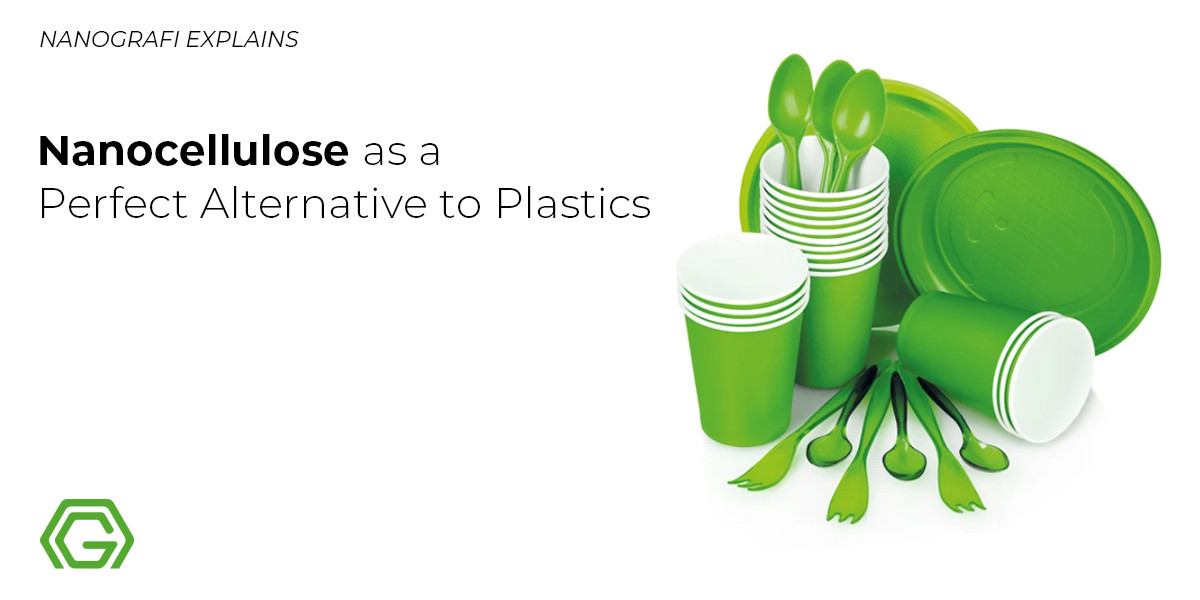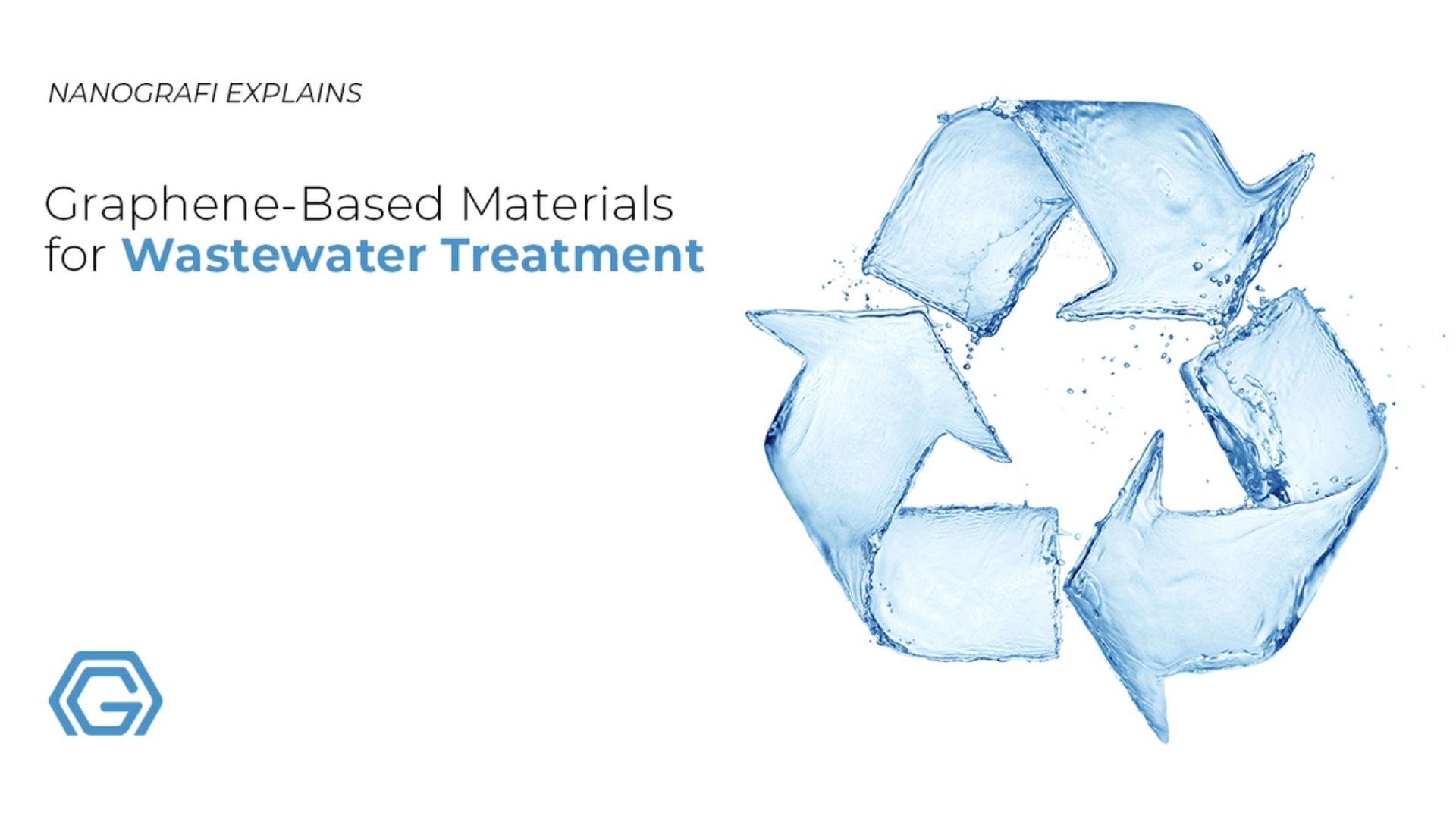Nanocellulose as a Perfect Alternative to Plastics
Today, plastics based on petroleum including PP, PE, PVC and so forth have turned out to be the major source of pollution in the environment.
It is mostly because of their hard degradation and inducing a series of threats to the human and other species. There are now a lot of ongoing efforts develop materials of sustainable and biodegradable grade for Packaging so that plastic products could be replaced.
Introduction
In order to get over environmental issues and the problem of the widest red application of plastics, cellulose packaging materials more importantly the nanoscale cellulose fibers have shown to be favorable and efficient being employed instead of plastics 1.
An Overview of Cellulose
In the progressive commercialization of nanotechnology-based industries, nanocellulose is considered of a great importance as researchers and industrialists are investigating and exploring novel manufacturing pathways and applications for nanocellulose. In fact, there are major and incredible applications of nanocellulose like super flexible screens, bendable batteries, incredibly fuel efficient cars, body armor and future filters. In packaging for example, there is a growing motivation to involve nanoscale cellulosic particles in packaging mostly because of its flexibility, edibility, biodegradability, transparency antimicrobial nature mechanical and barrier properties.
What is Cellulose?
Cellulose occurs abundantly and naturally as raw material on Earth amounting billions of tons made by many different plant species. Technically, cellulose is a cheap, light-weight, thermally stable organic compound and one of the most common agents to meet the standards of sustainable chemistry since it is naturally biodegradable as well as renewable. Within plants, cellulose fibers are produced by microfibrils that are highly crystalline entity. In the past years, cellulose has drawn a lot attention due to its considerable impact on areas like flexible electronics and displays, textiles, sensors, laminates, pharmaceuticals coatings, food and actuators 2. Chemically speaking, cellulose fibers are made of a chain of hundreds to thousands of D-glucose shaped like a linear structure. They are regarded as the important structural members of distinct species of algae and the walls of green plants cells. The walls of plants cells are composed of cellulose microfibrils with crystalline structure with a width of about less than 100 nm containing around 40 fully extended cellulose chains behaving like strengthened steel in the fabric of walls and are surrounded by polysaccharides including hydrophobic non-crystalline lignin and hemicellulose which are nanocrystalline structures too. Accordingly, it should be noted that cellulose-based nanostructures like cellulose nanofibers are originally biomolecules and abundantly found on Earth as well as being synthesized naturally in larger quantities through the natural photosynthesis procedure 3.
Nanocellulose/Cellulose Nanofibers
Cellulose nanofibers are typically several micrometers and 5 to 20 nm wide with no solubility in aqueous solutions but are dispersed so perfectly to make a viscose suspension. Cellulose nanofibers possess anisotropic physical characteristics. The highly crystalline cellulose nanofibers elastic modulus is 150 GPa and 50 GPa for longitudinal and transverse directions, respectively basically known as the ratio of their stress to the corresponding strain, Cellulose nanofibers are generally too short to be applied in environmentally friendly composites such as CNF reinforced composites, whereas they have excellent mechanical properties. In fact, the mechanical properties of nanofibers improve when they are aligned so finely and perfectly. This alignment of nanofibers has been reported in many research projects using electric field, shear force, magnetic field and mechanical stretching. Among these techniques, it is very simple to achieve some sort of orientation based on shear force with resulting products in larger and industrial scales. With regard to cellulose nanofibers suspension quality, spinning them appears to be an efficient way to obtain CNFs. In addition to spinning, mechanical stretching is also an efficient way to get cellulose nanofiber with high mechanical properties and improved alignment 2. Cellulose as a sustainable and renewable macromolecule has drawn significant attention and is a good motivation for a lot of researchers to study cellulose-based materials mainly in nanoscale as nanomaterials with practically new applications. Cellulose-based nanomaterials, also termed as nanocellulose, are categorized as nanocrystalline cellulose (NCC), cellulose nanofiber, bacterial nanocellulose and nanofibrillated cellulose (NFC). These nanostructured cellulose materials possess different properties in particle size, morphology and crystallinity induced by the different extraction method and different source 4.
If you are interested in graphene-based materials for wastewater treatment,
you can read our blog post here.
Environmental Impact of Nanocellulose
In fact, nanocellulose can potentially be applied for environmental and energy purposes and in areas like aerospace, strategic fields, biomedicine and electronic information most commonly because of its high aspect ratio, low thermal expansion efficiency, high mechanical strength and nanoscale properties. In addition, the sustainable nature of nanocellulose being originated from marine organisms and plants with natural renewable properties encourages its application as an environmentally friendly material with huge abundance in reserves. The unique properties and characteristics make nanocellulose an ideal choice to be used instead of non-renewal materials like plastics making it the center of attention in scientific and industrial applications. The nanocellulose derived from nanopaper shows most of the characteristics of plastic films including flexibility, low thermal expansion, high mechanical strength, electric insulation and high transmittance. Therefore, cellulose has been widely and comprehensively investigated to be applied as battery separators, electronic device substrates, sewage purification materials, and photoelectric and thermoelectric materials 5.
Nanopaper Based on Nanocellulose for Packaging
It is of great degree of significance to isolate nanocellulose from abundant plants including shrub branches, crop straws and wood residues and additionally, build nanocellulose into nanopaper to replace the use of plastic film. Nevertheless, the novel paper is basically hydrophilic and susceptible to moisture making it difficult to be employed directly in the agricultural field, medical packaging, electrical substance, food packaging and so forth compared to the most common transparent plastic films. Regarding the issues mentioned earlier, it is essential to include hydrophobic agents and functional groups in order to treat nanopaper to finally design a grade of nanopaper with a hierarchical structure and convey the hydrophobicity to the nanopaper and water repellent treatment 5.
Composites Based on Nanocellulose
Composites based on nanocellulose could also be appropriate for a wide range of applications including scaffold for tissue engineering, flexible screens and medical implants to name a few. Nanocellulose in this order, could be considered as an environmentally friendly alternative to be used instead of petroleum-based plastics which are predominantly used in packaging. The excessive application of non-degradable plastics has caused huge ecological disasters like The Great Pacific Garbage Patch which is directly made up of plastic junk floating in the Pacific Ocean amounting twice as big as the United States.
Conclusion
The applications of nanocellulose in various industries are technology-dependent and include electrospinning, composite extrusion, casting evaporation, layer-by-layer assembly and cellulose composites. The application of nanocellulose in food packaging is highly desired for several purposes as it prevents the spoilage of food contents, blocks the entry of oxygen into the food content, replaces the application of polystyrene based phones, extends food shelf life and improves the quality of food.
To discover the latest news from nanotechnology, you can visit Blografi.
References
Cellulose Nanofibers - Nanografi Nano Technology. (n.d.). Retrieved April 29, 2024, from https://nanografi.com/blog/cellulose-nanofibers/
Examining Nanocellulose: A Promising Approach - Nanografi - Nanografi Nano Technology. (n.d.). Retrieved April 29, 2024, from https://nanografi.com/blog/examining-nanocellulose-a-promising-approach-nanografi/
Explained: Cellulose Nanofibers - Nanografi Nano Technology. (n.d.). Retrieved April 29, 2024, from https://nanografi.com/blog/explained-cellulose-nanofibers/
Global Cellulose Nanofibers Market and Future - Nanografi Nano Technology. (n.d.). Retrieved April 29, 2024, from https://nanografi.com/blog/global-cellulose-nanofibers-market-and-future/
Graphene-Based Materials for Wastewater Treatment - Nanografi Nano Technology. (n.d.). Retrieved April 29, 2024, from https://nanografi.com/blog/graphenebased-materials-for-wastewater-treatment/
Isogai, A. Review Development of completely dispersed cellulose nano fi bers. 94, 161–179 (2018).
Kafy, A. et al. Cellulose long fibers fabricated from cellulose nanofibers and its strong and tough characteristics. Sci. Rep.7, 1–8 (2017).
Moohan, J. et al. Cellulose nanofibers and other biopolymers for biomedical applications. A review. Appl. Sci.10, (2020).
Nano and Micro Materials for A Sustainable Green World: Nano Cellulose Example - Nanografi Nano Technology. (n.d.). Retrieved April 29, 2024, from https://nanografi.com/blog/nano-and-micro-materials-for-a-sustainable-green-world-nano-cellulose-example/
Nanocellulose: Descriptions, Usage and Applications - Nanografi Nano Technology. (n.d.). Retrieved April 29, 2024, from https://nanografi.com/blog/nanocellulose-descriptions-usage-and-applications/
Nanopaper, T. et al. molecules Screening of Nanocellulose from Di ff erent Biomass Resources and Its Integration for Hydrophobic. 1–9.
Su, Y. et al. Cellulosics for packaging. BioResources13, 4550–4576 (2018).
The Nano-Plastics in Our Waters: A Brief Explanation of Its Impact on Ecology and Human Life - Nanografi Nano Technology. (n.d.). Retrieved April 29, 2024, from https://nanografi.com/blografi/the-nanoplastics-in-our-waters-a-brief-explanation-of-its-impact-on-ecology-and-human-life/
Recent Posts
-
Turning Noise into Power: Energy Harvesting with Piezoelectric Nanogenerators
Ambient acoustic energy, once an untapped resource, is now being converted into sustainable electric …5th Mar 2025 -
Holey Super Graphene in Li-ion Batteries: Next Generation of Energy Storage
Holey Super Graphene (hG), also referred to as “holey graphene,” is redefining li-ion ba …7th Feb 2025 -
Future Communication with 5G Technology and Advanced Materials
5G technology opens the doors to a new era in communication with faster connection speeds, low laten …6th Feb 2025






